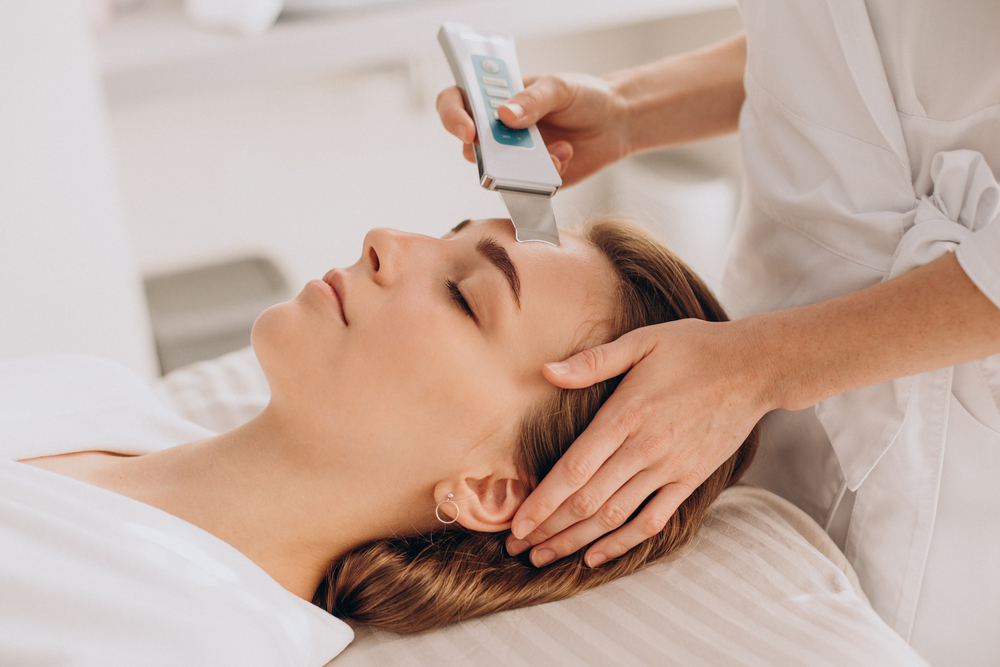Welcome to our guide on addressing pigmentation on the face, a common concern that affects people of all ages and skin types. Whether you’re dealing with dark spots, uneven skin tone, or melasma, we’re here to explore the causes behind pigmentation issues and discuss effective solutions, including the innovative Pico Laser treatment.
What Causes Pigmentation on Face?
Pigmentation on the face can be attributed to various factors, both internal and external. Understanding these causes is crucial in devising an effective strategy for prevention and treatment.
Sun Exposure: One of the primary culprits behind facial pigmentation is prolonged exposure to the sun’s harmful UV rays. Over time, UV exposure can lead to the overproduction of melanin, resulting in dark spots and hyperpigmentation on the skin.
Hormonal Changes: Fluctuations in hormone levels, particularly during pregnancy or while taking birth control pills, can trigger an increase in melanin production, leading to conditions such as melasma or “pregnancy mask.”
Genetics: Some individuals are genetically predisposed to developing pigmentation issues, such as freckles or age spots, due to their skin’s inherent melanin production and distribution.
Inflammation: Skin inflammation caused by acne, eczema, or other skin conditions can stimulate melanocytes, the pigment-producing cells in the skin, leading to post-inflammatory hyperpigmentation.
Preventing Pigmentation on Face
While it may not always be possible to completely avoid pigmentation issues, there are steps you can take to minimize their occurrence and severity.
Sun Protection: Shielding your skin from UV radiation is paramount in preventing pigmentation problems. Always wear sunscreen with a high SPF, seek shade during peak sun hours, and wear protective clothing, such as wide-brimmed hats and sunglasses.
Gentle Skincare Routine: Opt for skincare products formulated with gentle ingredients that nourish and protect the skin without causing irritation or inflammation. Avoid harsh exfoliants and abrasive scrubs that can exacerbate pigmentation issues.
Hormonal Balance: If you’re experiencing hormonal fluctuations, such as during pregnancy or menopause, consult with a healthcare professional to explore options for hormone regulation and management.
Healthy Lifestyle Choices: Maintaining a balanced diet rich in antioxidants, staying hydrated, getting adequate sleep, and managing stress levels can all contribute to overall skin health and reduce the risk of pigmentation problems.
Treating Pigmentation on Face
When it comes to addressing existing pigmentation issues, there are several treatment options available, ranging from topical creams to professional procedures like Pico Laser therapy.
Topical Treatments: Over-the-counter and prescription-strength topical treatments containing ingredients such as hydroquinone, retinoids, kojic acid, or vitamin C can help lighten dark spots and even out skin tone over time.
Chemical Peels: Chemical peels involve the application of a chemical solution to the skin, which exfoliates the outer layer and stimulates cell turnover. This can be effective in reducing the appearance of pigmentation and improving overall skin texture.

Microdermabrasion: Microdermabrasion is a non-invasive procedure that uses a diamond-tipped device to gently exfoliate the skin, removing dead cells and promoting collagen production. While it may not target deep pigmentation issues, it can help improve surface irregularities and enhance overall skin radiance.
Pico Laser Therapy: Pico Laser is a cutting-edge laser technology that delivers ultra-short pulses of energy to target pigmented lesions with precision. Unlike traditional lasers, Pico Laser works at a picosecond (trillionth of a second) level, breaking down pigment particles into smaller fragments that are more easily eliminated by the body’s natural processes. This results in faster and more effective clearance of pigmentation with minimal downtime and side effects.
Pico Laser treatment is suitable for various pigmentation concerns, including:
Sunspots
Melasma
Freckles
Post-inflammatory hyperpigmentation
Uneven skin tone
The number of Pico Laser sessions required depends on the severity of the pigmentation and individual skin response. Many individuals experience significant improvement after just a few sessions, with continued enhancement over time.
Conclusion
In conclusion, pigmentation on the face can be a distressing issue, but with the right preventive measures and targeted treatments, you can achieve a clearer, more radiant complexion. Whether you’re adopting sun-safe habits, exploring topical solutions, or considering advanced therapies like Pico Laser, there are plenty of options available to help you address pigmentation concerns and regain confidence in your skin. If you’re unsure which approach is best for you, consult with a qualified dermatologist or skincare specialist who can tailor a treatment plan to suit your unique needs and goals.




